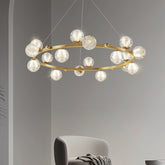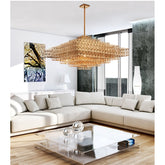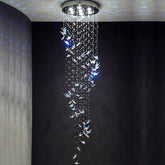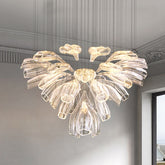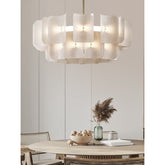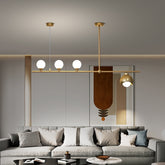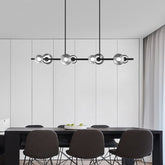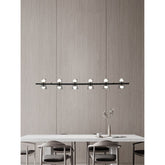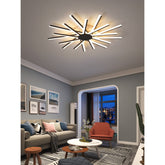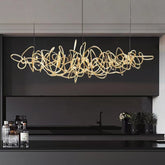5 Timeless Interior Design Trends That Never Go Out of Style
Timeless interior design refers to a style that remains elegant and relevant despite changing trends. It embraces elements that have proven their aesthetic value and functionality over the years, creating spaces that are both beautiful and enduring. Timeless design is not about following the latest fad; it’s about creating a space that reflects classic beauty, quality craftsmanship, and enduring appeal.
Incorporating timeless trends in home decor is essential for several reasons. Firstly, it ensures that your home remains stylish and appealing for many years, avoiding the need for frequent and costly updates. Timeless design promotes sustainability by emphasizing quality over quantity, encouraging the use of durable materials and well-crafted pieces. Additionally, it provides a stable and harmonious environment, contributing to the overall well-being and comfort of the inhabitants.
The purpose of this article is to guide you through ten interior design trends that have stood the test of time. These trends are not only visually appealing but also functional and versatile, making them ideal for creating a home that is both stylish and practical.
Statement Lighting
Lighting plays a crucial role in interior design, influencing the ambiance, functionality, and aesthetic appeal of a space. It highlights architectural features, enhances color schemes, and creates a sense of depth and warmth. Proper lighting can transform a room, making it feel more inviting, spacious, and dynamic. In timeless interior design, statement lighting serves as both a functional element and a decorative focal point, seamlessly blending practicality with beauty.
Examples of Timeless Lighting Fixtures
- Chandeliers: Chandeliers are classic fixtures that add elegance and sophistication to any room. They come in various styles, from ornate crystal designs to modern minimalist shapes, making them versatile for different decor themes.
- Floor Lamps: Floor lamps are both practical and stylish, providing task lighting and enhancing the room's decor. Timeless designs include arc lamps with sleek lines and classic tripod lamps with adjustable heads.
- Wall Sconces: Wall sconces offer a subtle, ambient glow and can be used to highlight artwork or architectural features. Traditional candle-style sconces and modern geometric designs both have lasting appeal.
- Pendant Lights: Pendant lights are versatile fixtures that can be used in various settings, from kitchens to living rooms. Timeless options include industrial-inspired metal pendants and elegant glass globes.
Classic Color Palettes
Classic color palettes consist of neutral and understated hues that have remained popular across various design eras due to their versatility and timeless appeal. Neutrals like whites, beiges, grays, and taupes form the foundation of these palettes, creating a calming and sophisticated backdrop. Classic colors often include rich, deep tones like navy blue, forest green, and burgundy, which add depth and elegance to a space without overwhelming it. These colors work well together and with other shades, making them perfect for creating a cohesive and enduring design.
Examples of Timeless Color Combinations
- White and Navy Blue: This combination is crisp, clean, and evokes a sense of nautical charm. It's perfect for creating a sophisticated and serene atmosphere in any room.
- Beige and Gray: A warm beige paired with a cool gray creates a balanced and elegant look. This combination is versatile and works well in both traditional and modern settings.
- Black and White: The ultimate classic combination, black and white, offers a bold, high-contrast look that is both timeless and contemporary. It’s perfect for creating a dramatic and stylish space.
- Cream and Forest Green: This pairing is soft yet rich, bringing a touch of nature indoors. It’s ideal for creating a calming and inviting environment.
- Taupe and Burgundy: Taupe’s neutrality combined with the deep, luxurious tones of burgundy adds warmth and sophistication to any room, making it a timeless choice for living areas or bedrooms.
How to Incorporate Classic Colors into Modern Homes
- Start with a Neutral Base: Use neutral colors like white, beige, or gray for walls, large furniture pieces, and flooring. This creates a versatile backdrop that allows you to layer in classic color accents.
- Add Depth with Accents: Incorporate classic colors through accent pieces such as throw pillows, rugs, and artwork. For example, a navy blue sofa against a light gray wall adds a pop of color while maintaining a timeless feel.
- Mix Textures and Materials: Combine different textures and materials to add interest and depth to your color scheme. For example, pair a smooth beige leather couch with a plush gray wool rug and metallic gold accents for a luxurious and sophisticated look.
- Use Classic Patterns: Incorporate patterns like stripes, florals, or plaids in classic colors. These patterns are timeless and can add visual interest without overwhelming the space.
- Balance with Modern Elements: Blend classic colors with modern design elements such as sleek furniture, minimalist decor, and contemporary artwork. This creates a fresh and current look while maintaining the timeless appeal of classic colors.
- Experiment with Light and Dark: Use a mix of light and dark shades to create contrast and balance. For instance, dark navy walls can be paired with white trim and light-colored furniture to create a dramatic yet harmonious space.
Classic Patterns and Textiles
Timeless patterns have remained popular across generations, adding character and style to home decor without becoming outdated. Some of the most enduring patterns include:
- Stripes: Stripes are versatile and can be used in various widths and orientations. They add a sense of structure and order to a space, whether in bold, contrasting colors or subtle, tone-on-tone shades.
- Florals: Floral patterns bring a touch of nature indoors, adding elegance and softness. From delicate, small-scale prints to bold, large blossoms, florals can suit both traditional and contemporary settings.
- Checks: Check patterns, including gingham and plaid, offer a classic, homely feel. They can be used in a range of colors and scales, making them adaptable to different decor styles.
- Herringbone and Chevron: These patterns create visual interest with their zigzag designs, adding a dynamic element to floors, walls, or textiles.
- Damask: Known for its intricate and elegant motifs, damask adds a touch of luxury and sophistication to any room, often seen in wallpapers and upholstery.
Examples of Classic Textiles
- Wool: Wool is a durable and warm fabric, perfect for rugs, throws, and upholstery. Its natural texture and insulating properties make it a timeless choice for creating cozy and inviting spaces.
- Linen: Linen offers a light, airy feel with its breathable and natural texture. It’s ideal for curtains, bedding, and tablecloths, bringing a relaxed yet refined look to any room.
- Cotton: Versatile and easy to care for, cotton is a staple in home textiles. It’s used in everything from bedding and towels to curtains and upholstery, providing comfort and durability.
- Silk: Silk adds a luxurious and elegant touch to home decor. It’s often used in decorative pillows, curtains, and upholstery, where its smooth texture and subtle sheen can be appreciated.
- Velvet: Velvet is rich and plush, adding depth and opulence to a room. It’s perfect for statement pieces like sofas, chairs, and cushions, providing a touch of glamour.
How to Mix and Match Patterns and Textiles in Home Decor
- Start with a Neutral Base: Begin with a neutral palette for large pieces like walls and furniture. This creates a versatile backdrop that allows patterns and textiles to stand out without overwhelming the space.
- Choose a Dominant Pattern: Select one bold pattern to serve as the focal point, such as a large floral or striking stripe. Use this pattern on a prominent piece, like an accent wall, rug, or large piece of furniture.
- Incorporate Secondary Patterns: Add one or two smaller-scale patterns that complement the dominant pattern. For example, pair a large floral print with subtle stripes or checks. Ensure the colors in the secondary patterns harmonize with the dominant pattern.
- Vary Textures: Mix different textures to add depth and interest. Combine smooth textiles like silk or cotton with rougher textures like wool or linen. This creates a tactile and visually appealing contrast.
- Balance Scale and Proportion: Pay attention to the scale of patterns. Large-scale patterns should be balanced with smaller, more intricate designs. This prevents the space from feeling too busy or cluttered.
- Use Patterns Sparingly: Avoid overloading a room with too many patterns. Instead, use them as accents through throw pillows, rugs, curtains, or upholstery. This approach keeps the design cohesive and visually appealing.
- Repeat Colors: Ensure a cohesive look by repeating colors found in the patterns and textiles throughout the room. This can be done through accessories, artwork, or other decor elements.
Vintage and Antique Pieces
Incorporating vintage and antique items into modern decor adds depth, character, and a sense of history to your space. These pieces often boast superior craftsmanship and unique details that are hard to find in contemporary mass-produced items. By blending old and new, you create a layered, curated look that tells a story and showcases your personal style. Vintage and antique items can also be more sustainable choices, as repurposing and reusing older pieces reduce the demand for new resources and production.
Examples of Timeless Vintage and Antique Pieces
- Antique Furniture: Pieces like Victorian armchairs, mid-century modern sofas, or Art Deco side tables offer timeless elegance and quality. Their distinctive designs can serve as focal points in a room.
- Vintage Lighting: Chandeliers, sconces, and lamps from past eras can add a unique and sophisticated touch. Look for fixtures with classic lines and materials like brass, crystal, or enamel.
- Decorative Accessories: Items such as vintage mirrors, ornate picture frames, and antique vases can infuse character and charm into any space. These accessories often feature intricate details and craftsmanship that stand the test of time.
- Rugs and Textiles: Persian rugs, vintage quilts, and antique tapestries bring rich patterns and textures to modern decor. Their quality and durability make them lasting additions to your home.
- Art and Collectibles: Vintage artwork, sculptures, and collectibles can add personality and a sense of history. Pieces from different periods can create a diverse and interesting collection.
How to Blend Old and New Elements Seamlessly
- Create a Balanced Mix: Aim for a balance between vintage and modern elements to avoid an overly eclectic or disjointed look. Pair an antique dining table with contemporary chairs or a vintage rug with modern furniture to create harmony.
- Use a Consistent Color Palette: Ensure a cohesive look by sticking to a consistent color palette. Vintage and antique pieces in complementary colors to your modern decor can tie the room together.
- Highlight Unique Features: Allow vintage and antique items to shine by giving them prominent placement. For example, a vintage chandelier can be the centerpiece of your living room, or an antique dresser can serve as a focal point in your bedroom.
- Mix Textures and Materials: Combine different textures and materials to add depth and interest. Pairing the smooth finish of modern furniture with the rich textures of vintage textiles or wooden antiques creates a visually engaging space.
- Incorporate Small Accents: Start with small accents if you're new to blending styles. Vintage picture frames, mirrors, or small decorative items can introduce character without overwhelming the space.
- Embrace Contrast: Use contrast to your advantage by pairing sleek, minimalist modern pieces with ornate, detailed vintage items. This juxtaposition creates a dynamic and visually appealing design.
- Keep It Personal: Choose vintage and antique pieces that resonate with you personally. Whether it's a family heirloom or a flea market find, these items should reflect your taste and add a meaningful touch to your decor.
Symmetry and Balance
Symmetry and balance are fundamental principles in interior design that contribute to a harmonious and aesthetically pleasing space. Symmetry involves creating mirror images on either side of a central point, while balance refers to the distribution of visual weight within a room. Together, these principles help establish order and cohesion, making a space feel comfortable and inviting. Proper use of symmetry and balance can enhance the flow of a room, highlight focal points, and create a sense of stability and tranquility.
Examples of Creating Balanced Spaces
- Furniture Arrangement: Placing identical furniture pieces on either side of a focal point, such as two matching sofas facing each other with a coffee table in between, creates a symmetrical layout that promotes conversation and visual harmony.
- Decor Placement: Symmetrically arranging decor items, like placing identical lamps on either side of a bed or fireplace, helps create balance and a sense of completeness. Similarly, arranging artwork in a grid or mirror-image pattern on a wall can enhance symmetry.
- Architectural Features: Symmetry can be achieved through architectural elements such as windows, doors, and built-in shelving. For instance, placing built-in bookshelves on either side of a fireplace creates a balanced and cohesive look.
- Color and Pattern: Using color and pattern evenly throughout a space helps maintain visual balance. For example, distributing accent colors or patterns in pillows, rugs, and curtains throughout the room ensures that no one area feels heavier or more visually dominant than another.
Tips for Achieving Symmetry in Various Rooms
-
Living Room:
- Furniture Placement: Position sofas, chairs, and tables to create a symmetrical layout. For example, place two identical sofas facing each other with a central coffee table.
- Decor Items: Use pairs of items such as lamps, vases, or artworks to create balance. Place them on either side of a focal point, such as a fireplace or TV.
- Rugs and Carpets: Center rugs and carpets within the room and align them with the main furniture pieces to create a sense of order and balance.
-
Bedroom:
- Bed Placement: Position the bed centrally against a wall, ideally with matching bedside tables and lamps on either side to create a symmetrical look.
- Wall Art: Hang artwork or mirrors in pairs or symmetrically arranged groups above the headboard for a balanced aesthetic.
- Textiles: Use matching or coordinating bedding and pillows on both sides of the bed to enhance symmetry.
-
Kitchen:
- Cabinet Layout: Ensure that upper and lower cabinets are evenly distributed on both sides of the kitchen to create a balanced appearance.
- Island and Seating: Place the kitchen island centrally and ensure that seating, such as bar stools, is evenly spaced.
- Lighting: Install pendant lights symmetrically above the island or dining table for a cohesive and balanced look.
-
Bathroom:
- Vanity Setup: If you have a double vanity, use matching sinks, mirrors, and lighting fixtures to create symmetry.
- Towel and Accessory Placement: Place towels, accessories, and storage items evenly on either side of the sink or shower area.
- Tile and Pattern: Use symmetrical patterns in tiles and flooring to enhance the balanced look of the space.
-
Dining Room:
- Table and Seating: Position the dining table centrally in the room and ensure that chairs are evenly spaced around it.
- Lighting: Center a chandelier or pendant light above the dining table for a balanced focal point.
- Decor: Use symmetrical arrangements of decor items, such as identical vases or candleholders, as centerpieces or on sideboards.
Final Words
Embracing timeless interior design trends ensures your home remains stylish and inviting for years to come. By incorporating elements like classic color palettes, statement lighting, vintage pieces, and balanced arrangements, you create a space that reflects both tradition and modernity. These enduring trends provide a foundation for personal expression and adaptability, allowing your decor to evolve while maintaining its core elegance. Start small, experiment with these ideas, and enjoy the lasting beauty and functionality they bring to your home.












































































































